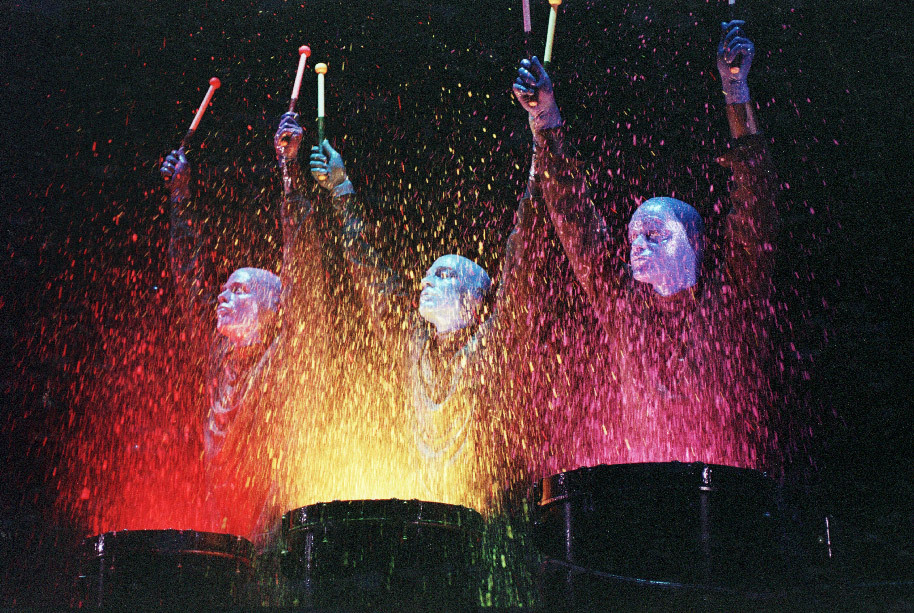In most forms of art, the artist has something in their
head, and they want you to see it. You
communicate that imagination through your chosen form of media. Visual artists, from painters to
movie-makers, put their imagination into a physical medium. Of course, if you're a musician, perhaps it's
the music itself you're trying to express, not a visual to go with it, so
musicians could be considered have an equally concrete medium.
 |
| In some cases, of course, visuals are part of the musical experience. |
But other artists have some level of abstraction, using a
medium that doesn't directly use the sense, but rather the imagination of the
viewer. Of course, novelists are the
primary example. When you write, your
task is to describe what's in your head so the reader forms the same image in
theirs.
Of course, games cross the whole spectrum. Realistic games with hi-def 3D graphics try
to be like a movie, presenting you with the images, while older games, retro
games, and abstract games have you use your imagination just as well as reading
a book does. In the case of older games,
this was mandatory simply because the technology wasn't there.
But now that developers have a choice of going between
realistic and abstract, there is a market to explore the abstract nature of
games to their full potential. This is
usually in the realm of indie games, where a retro or abstract visual style is
a plus.
There is nothing wrong with either style, and it is simply
up to the developers to figure which is best for their game. Dwarf Fortress is supposed to be ASCII art,
while Modern Combat 4 tries its best to be as realistic as possible. Those two games would not work if their
graphical styles were reversed (although that would be a fun experiment).
 |
| Such graphics could come out pretty impressive. Now to get them at 60 fps. |
So the artists of Modern Combat 4 took what was in their
imagination and showed it to us. Tarn
Adams tells us that a letter "G" is a goblin, and it's up to us to
see it.
When I think of the games in my head, I almost universally
see them as the realistic kind--or at least the kind where the imagination of
the player doesn't do so much, even if the graphics are cartoony or
exaggerated.
Yet, while I can design and code, art has always been the
weakest part of my game development skillset.
My head fills with gorgeous panoramas and cinematic set pieces, but I
always feel there is no way to display what's in my head to the screen without
devoting at minimum months to learning that skillset (and probably years).
But now I think: is that necessary? Even if my head is filled with amazing
pictures, do I need to show that to the player, or can I suggest it, and let
them imagine it themselves?
After all, I was a writer before I was a game designer,
learning how to get my imagination down on the page for others to
replicate. I never drew pictures and
said "Look! This is what should be in your head!"
 |
| And when I did, it took a lot of imagination to see what I meant anyway. (Note: not actually my drawing. My art skills are worse.) |
So it should go with my own videogames, perhaps. Why should I spoil the fun of imagining a
beautiful scene, when that was the best part to me?
I think the trick is deciding which game idea needs to be
represented realistically, and which don't.
As I try to design what the January Engine is for, my head is filled
with beautiful scenes that will never be made.
But that's not what the JE is supposed to be about; it's meant to be
simple graphics to get the gameplay there.
Art is something I can't control, and so it always seems to
me that the thing I want the most is that which is beyond my reach. The kind of art I want for some of my game
ideas would take a team of artists months to create, even if the whole thing
could be programmed by myself in half the time.
I get ahead of myself and want more than is warranted for a project.
And without a big team behind me, why should I want to make
a huge, epic, graphically impressive game?
That's what the big budget game industry is for, and to be a part of
that is what satisfies that itch.
So projects here at Scattergamed, and little things I do by
myself, can be my playground, where I can tell you to pretend the pink block is
a pig and the green block is a tree. The
games industry can make the movies, while the indies write the novels.
 |
| Besides, fan art is half the fun! |
No comments:
Post a Comment